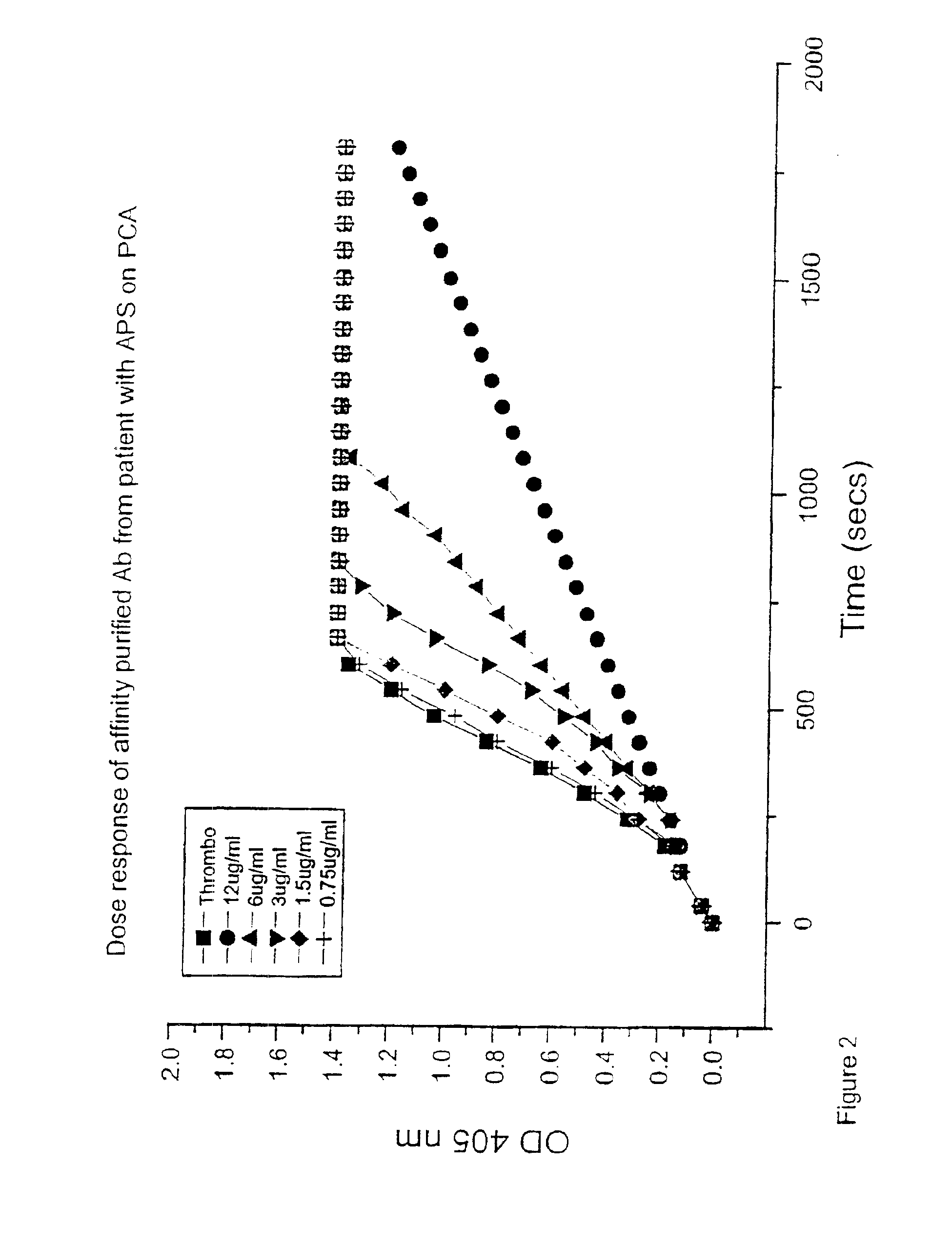Procoagulant assay
a technology of procoagulant and assay, which is applied in the direction of biochemistry equipment and processes, material testing goods, enzymes, etc., can solve the problem of missing antiphospholipid syndrome, and achieve the effect of simplifying clinical testing for clotting abnormalities
- Summary
- Abstract
- Description
- Claims
- Application Information
AI Technical Summary
Benefits of technology
Problems solved by technology
Method used
Image
Examples
Embodiment Construction
In Vitro Procoagulant Assay (PCGA)
[0037]A chromogenic assay originally described by Lando et al. (1986) Journal of Immunological Methods 89: 131-139 was used to determine the rate of thrombin generation over time. In essence, this is a measure of in vitro thrombin generation over a twenty minute period detected by a chromogenic substrate. When thrombin formation measured in optical density units on the Y axis is plotted over time measured in minutes on the X axis, a sigmoidal curve is derived. A shift in the curve to the left indicates accelerated thrombin generation and a shift to the right indicates inhibition of thrombin formation. Such changes can be quantified by expressing the results as a ratio of the ratio of the normal curve using the mean of three data points on the linear portion of the curve.
[0038]The present inventor has used this assay system to look at a number of antibody populations:[0039]1: Mouse monoclonal anti-human β2-GPI derived by immunising with native β2-GPI...
PUM
| Property | Measurement | Unit |
|---|---|---|
| OD | aaaaa | aaaaa |
| temperature | aaaaa | aaaaa |
| time | aaaaa | aaaaa |
Abstract
Description
Claims
Application Information
 Login to View More
Login to View More - R&D
- Intellectual Property
- Life Sciences
- Materials
- Tech Scout
- Unparalleled Data Quality
- Higher Quality Content
- 60% Fewer Hallucinations
Browse by: Latest US Patents, China's latest patents, Technical Efficacy Thesaurus, Application Domain, Technology Topic, Popular Technical Reports.
© 2025 PatSnap. All rights reserved.Legal|Privacy policy|Modern Slavery Act Transparency Statement|Sitemap|About US| Contact US: help@patsnap.com



